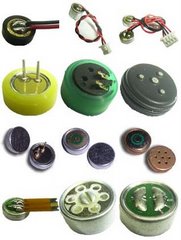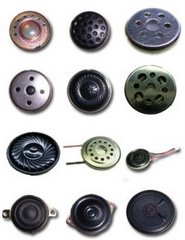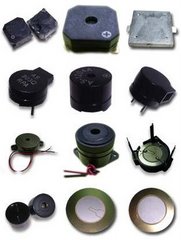In order to increase sound pressure level, we need to vibrate more air molecule by more power under unit time.
For the two sizes speakers, the area of diaphragms of the 15mm speakers are around 176mm square (7.5*7.5*3.14),
and the 20mm size speakers are around 314mm square(10*10*3.14). The 20mm speakers are only bigger by
5 mm/ 25%, however, the diaphragm are bigger by 78%. Therefore when we input the same power, the 20mm
speakers can vibrate more air at the same time, and it result in higher sound pressure level.
Generally, the speaker in bigger size can provide lower frequency response which is better for human’s
audition. On the other side, we can also provide the smaller speakers more power to make higher sound
pressure level, but it is limited by,
1. Acceptability of the diaphragms2. Thermolysis of the speakers3. After increasing the power, frequency response will change too(because thicker diaphragm, heavier coil..etc)
Therefore, what we can do is reform the material and the structure of the speakers to increase sound pressure level,
but if it is possible to choose the bigger size, the problem of the lower sound pressure level will be improved immediately.
想要有大的音壓,就必需在單位時間之內,以更多的能量來推動更多的空氣分子,
以二種尺寸來說,15mm的喇叭,振膜的面積大約是(7.5*7.5*3.14=176mm平方),
而20mm為(10*10*3.14=314mm平方), 直徑20mm的喇叭雖然在尺寸上只大了5mm / 25%,
但在振膜的表面積卻大了78%,在我們給予這二個喇叭一樣的功率時,
所聽到的聲音大小,就會有很大的不同,就是因為20mm的喇叭可以在同一時間內,
推動更多的空氣分子.
而且更大的尺寸,通常低頻響應也會比較好,人耳所感受的的聲音也會比較好聽些,
當然我們也可以給小喇叭更大的功率,使之發出更高的音壓,但受限於
1. 振膜的承受能力,
2. 喇叭散熱能力,
3. 功率加大後頻率響應特性的改變( 膜片需加厚,音圈變重....)
所以我們只好從材料,喇叭的結構來做改善,盡量將小尺寸的喇叭,聲音做大,
但如果尺寸容許的話,換大一號的喇叭,就可以馬上改善聲音不足的問題囉.
訂閱:
張貼留言 (Atom)




沒有留言:
張貼留言